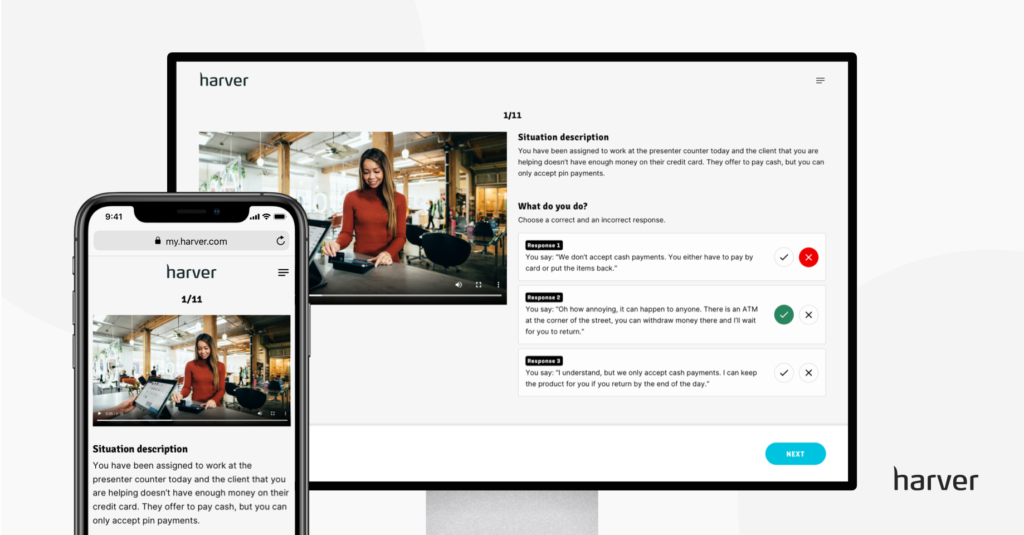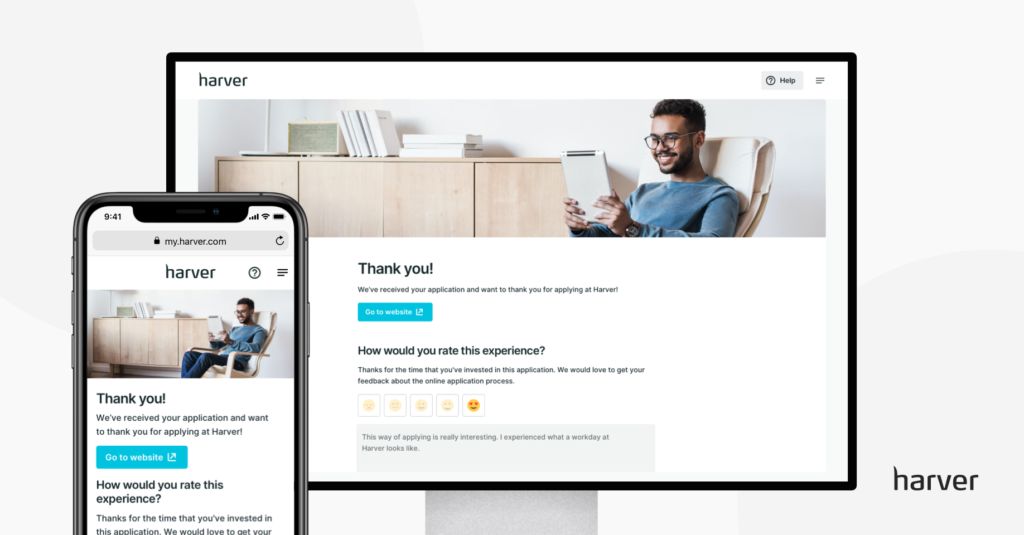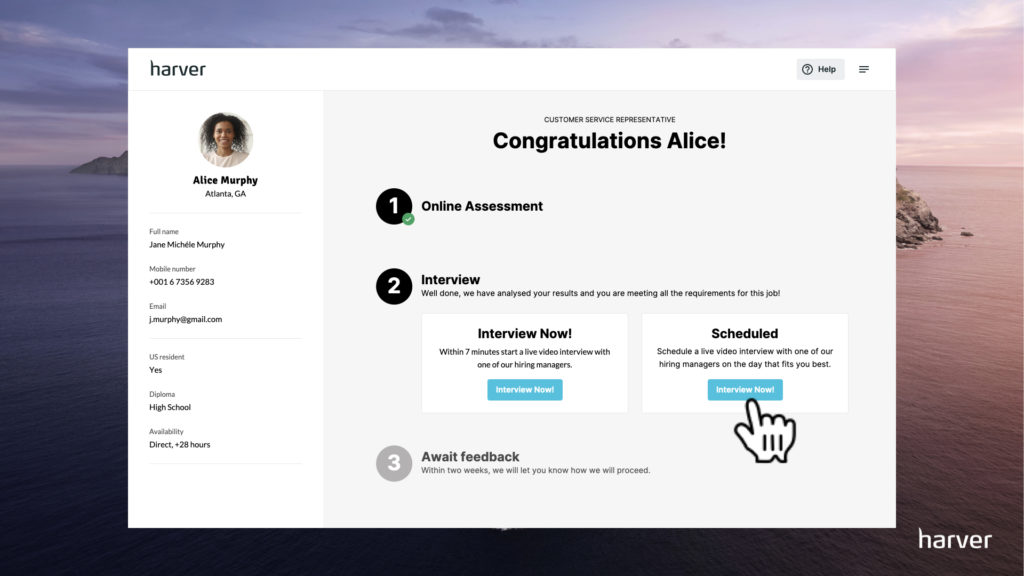Candidates not showing up for job interviews is frustrating at best. Not only do no-shows waste hiring managers’ time and use up valuable interview slots, but it can be a real administrative burden to reschedule no-shows too.
And the really unfortunate part is that interview no-shows happen a lot in volume hiring. When you’re recruiting en masse for hourly workers, you’ve got higher than average number applicants, so you’ll naturally have more no-shows to deal with for each open vacancy.
New data suggests that the current labor shortage has meant that as much as 90% of candidates are not showing up for interviews for hourly roles right now. However, interview no-shows aren’t entirely out of your control.
Let’s take a look at some of the reasons interview no-shows happen, and what you can do as an organization to keep them to a minimum.
What’s in?
Like what you see?
Don’t miss out. Subscribe to our quarterly digest to get the latest TA and TM resources delivered right to your inbox.
Why candidates don’t show up to interviews
Interview no-shows can happen for all different kinds of reasons; some avoidable, some unavoidable. Although candidates are usually responsible when it happens, if you accept at least some responsibility as an employer too, this will make it easier for you to do something about it.
So first, let’s take a look at some of the most common reasons why candidates don’t show up to job interviews in volume hiring.
- They lost interest in the role – The candidate lost interest in the role because your application process didn’t sell the job and company to them strongly enough. There was nothing that stood out to them that made your employer brand memorable or your organization seem like an exciting place to work.
- The application process wasn’t ideal – They found the application too long, boring or difficult – or maybe you asked questions they didn’t want to answer. These things can all contribute to the candidate building a negative impression of you as an employer.
- Nerves got the better of them – When you’re hiring for hourly, entry-level positions, some of your best candidates won’t have any previous work experience. This means it’s more likely that they’ll be nervous about the interview and, if nerves get the better of them, they may back out of the interview last minute.
- They got the interview date or time wrong – If the candidate is applying to multiple vacancies at once, it’s easy for times and dates to get confused or for interview invites to get lost in crowded inboxes.
- They don’t think they’re a good match for the role – Your application process has left them feeling intimidated or unqualified for the role, so they’re too nervous to come to an interview.
How to reduce no-shows when hiring for hourly roles
Now that we’ve covered some of the reasons no-shows happen in volume hiring, what can you do to prevent them from happening moving forward? Follow these guidelines to reduce the number of no-shows you experience for your volume-hiring vacancies.
1. Manage candidate expectations better
If you give candidates a clear job description and use the application process to provide insight into the day-to-day of the role, they’ll be more bought into the opportunity as they’ll know exactly what to expect.
You can do this easily by adding realistic job previews such as situational judgment tests to your application process. These kinds of interactive and engaging assessments help candidates visualize themselves in the role, which will make them feel confident that they’d enjoy working for you and feel motivated to show up for interview.

2. Sell the job
If you’re not selling the job enough to candidates, some applicants might decide it’s not worth the hassle of doing the interview.
In this candidate-short market, you’ll be competing against a lot of other employers for the same candidates. What are you doing to get candidates excited about the possibility of working for you instead of your competitors?
Expose applicants to your work environment and company culture during the application process so they engage quickly with the processes and can get excited about the idea of being part of your organization.
You can do this easily by adding employer brand material like employee video testimonials and job simulations to your candidate selection flows.
Here’s an example of application process that highlights the employer brand while informing candidates to manage their expectations. By implementing this selection process, Albert Heijn saw an increase of 42% in applications, and a 40% decrease in time to hire.
3. Select the right candidates for interview
If you have the tools to select the best-fit candidates for interview, you’ll naturally reduce your no-show rates as wrong-fit candidates tend to be the ones who don’t show up.
Use the recruitment data you hold to identify the skills and characteristics of your top performers and use the application process to assess candidates for those skills.
That way, you’re using solid data to select candidates who are likely to show up for an interview, get hired and stay in the role for longer.
Stop guessing,
Start data-driven hiring.
Learn how you implement a modern candidate selection process, that is: streamlined, experience-driven and backed by data.

4. Ask for feedback from no-shows
You’ll never know for sure why candidates aren’t showing up to your interviews unless you go ahead and ask them.
Collecting feedback from candidates who don’t show up will provide you with invaluable insights that you can use to improve your process and reduce your no-show rates over time.
Set up a feedback survey email in your CRM that will be automatically sent when a candidate is marked as a no-show. And sure, you won’t get a reply from everyone, but the responses you do receive will have a big impact on your strategy moving forward.

5. Let candidates know what to expect
Sometimes, nerves get the better of job seekers. When you’re hiring for entry-level hourly workers, it’s natural that some of your candidates will never have been to a job interview before. But that doesn’t mean they don’t have the potential to be a great employee!
To combat interview jitters and help your candidates feel more confident about coming to an interview with you, be as clear about what the interview process looks like so they know exactly what to expect.
Do this by sending an automated (but personalized) email to every successful applicant prior to interview explaining the next steps and interview structure. Keep the language of your email clear, informal and conversational so it’s easy to read and doesn’t intimidate less experienced candidates.
6. Communicate regularly with candidates
A lot of candidates drop out of the hiring process because of poor communication from hiring teams. One study found that 51% of candidates get frustrated about the lack of communication from hiring teams and 30% said employers didn’t even acknowledge their application.
Communicating with candidates doesn’t have to mean making hundreds of follow-up phone calls for every vacancy. Recruitment automation can do so much of the heavy lifting nowadays when it comes to communicating with candidates that there’s really no excuse for poor communication like this – even in volume hiring.
Use your hiring tech to schedule automated emails to go out to candidates as they move through different stages of the recruitment funnel. That way, you stay front of mind with the candidate, keep them engaged in the process and give them a sense of progression.
It’s easy to personalize these emails so the candidate won’t know you’re sending them automated communication. And if a candidate emails you with a question about the interview or hiring process, always respond promptly. Otherwise, you can be sure you won’t see them on interview day!
7. Move quickly
When the job market is this hot, every minute counts. Studies have shown that applicants are more likely to agree to a job interview if they receive a follow-up from employers within 48 hours.
Candidates lose interest the longer they have to wait to hear from you, so the slower your process is, the less invested your applicants will be, and the less likely they’ll show show up on interview day.
Harver has been designed streamline the hiring process as much as possible for this exact reason. By automating the recruitment funnel, candidates move through the process quickly with almost no waiting around for manual input from recruiters. This speeds up time to hire and massively improves your interview no-show rates too.
NexRep, for example, one of our BPO customers, decreased their time to activation from 21 to 3.5 days by automating their recruitment process, including the candidate selection criteria. You can read the case study below.
8. Be flexible
If you’re able to be flexible with interview scheduling, you’ll have a much better interview turnout. The key is to provide a few different options or even better – allow candidates to self-schedule interviews at a time that suits them.

Unemployment rates are at a record low right now, so it’s likely your applicants will already be in full-time work or have other job interviews they’re juggling. Unfortunately, this means candidates are less worried about missing job interviews and they won’t show up if the timing isn’t convenient for them.
If you’re able to offer evenings and weekend options – or if you’re happy to go down the route of pre-recorded asynchronistic virtual interviews instead – this can really help move your hiring process along.
If you’d like to see how Haver can transform your hiring process,
book a demo here!
9. Send interview reminders
Sometimes, candidates genuinely just forget they have an interview scheduled with you. For example, maybe they’re applying for multiple roles at once and get the dates mixed up, or there are big gaps of time between the stages of your recruitment process that they forgot they even applied.
With Harver, for example, you can send email and SMS appointment reminders and notifications to candidates in the days before the interview. This works as a good reminder but also gives candidates the opportunity to let your recruiting team know if they can’t make the agreed time slot anymore or they can even reschedule themselves in for another time.
Next steps
While it’s clear that there are many different reasons why a candidate might not show up for a scheduled appointment with you, there are lots of things you can do to minimize the chances of no-shows too.
Automating regular personalized communication and streamlining the recruitment process so you can move fast will increase your chances of turning candidates into new hires before your competitor does. An engaging application process that gives a strong impression of the job and organization will promote early-stage engagement and reduce your no-show rates substantially.
If you’d like to see how Harver can automate your candidate selection so you can engage, interview and hire candidates faster, you can book a demo below.
Ready to transform your hiring process?

